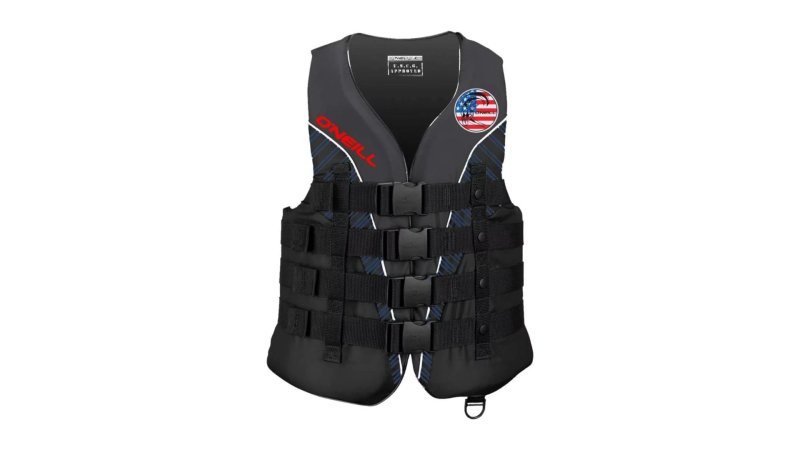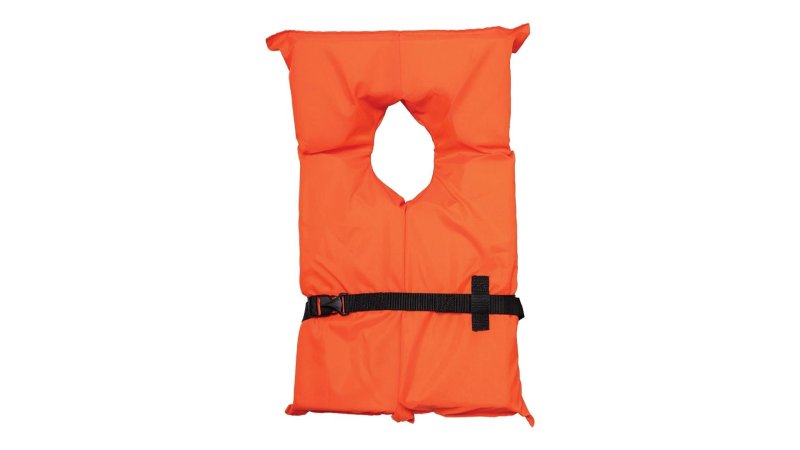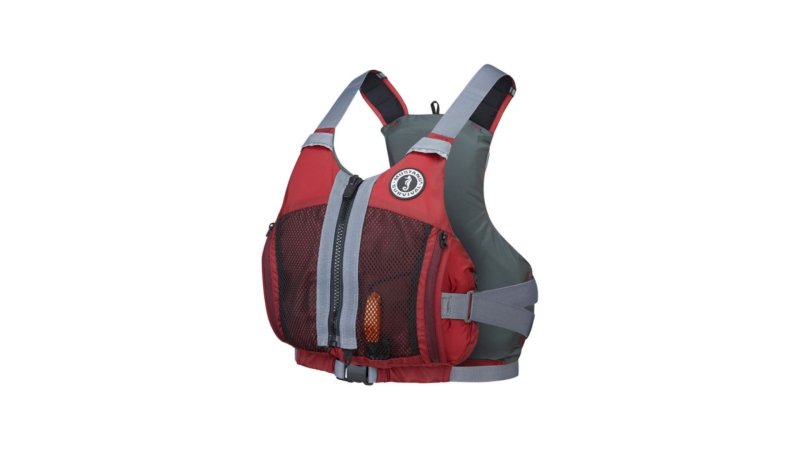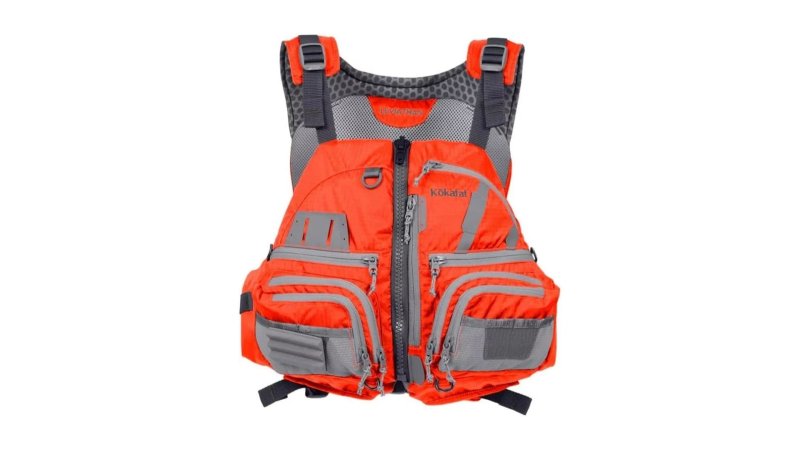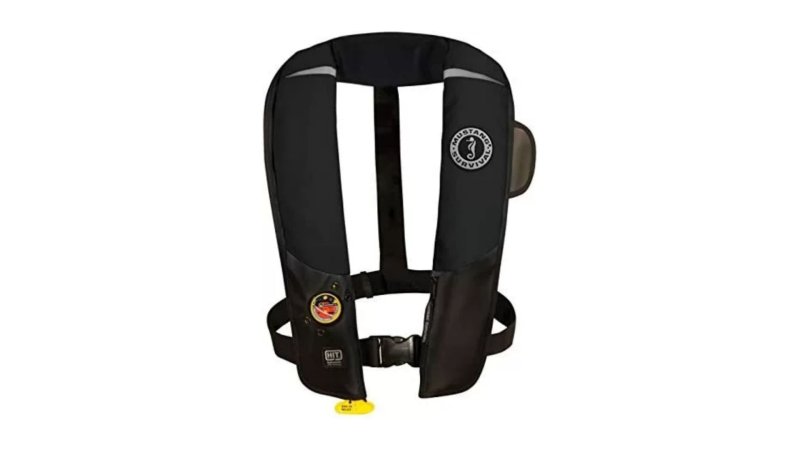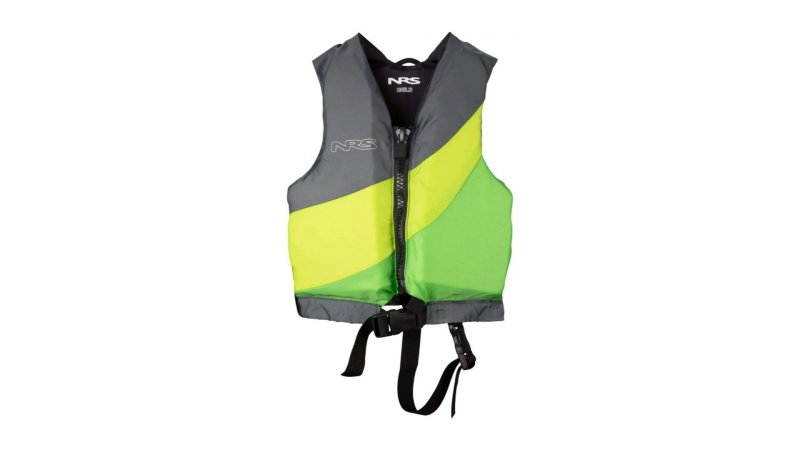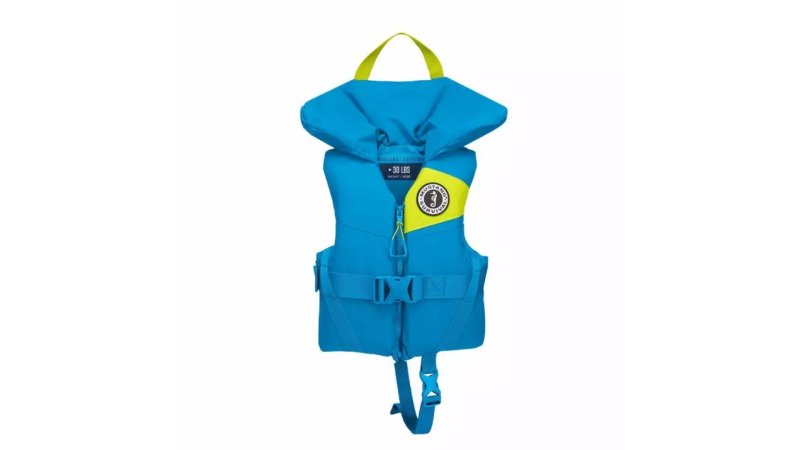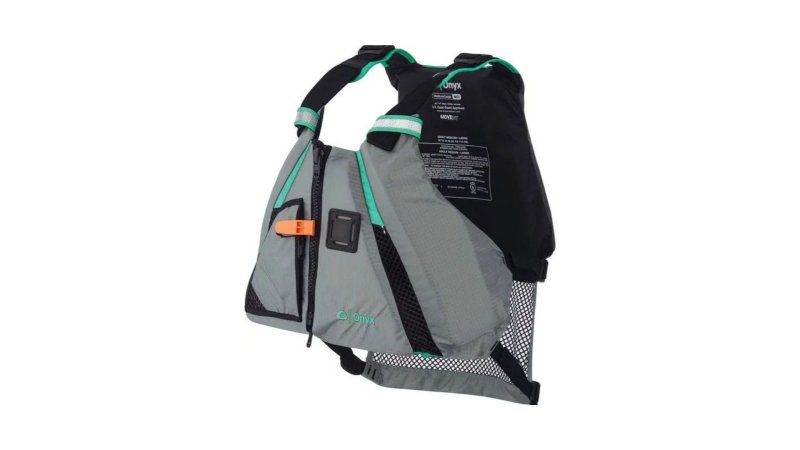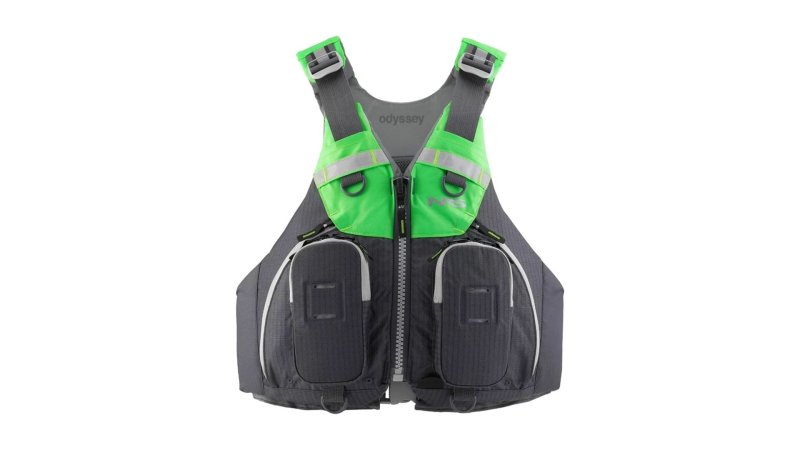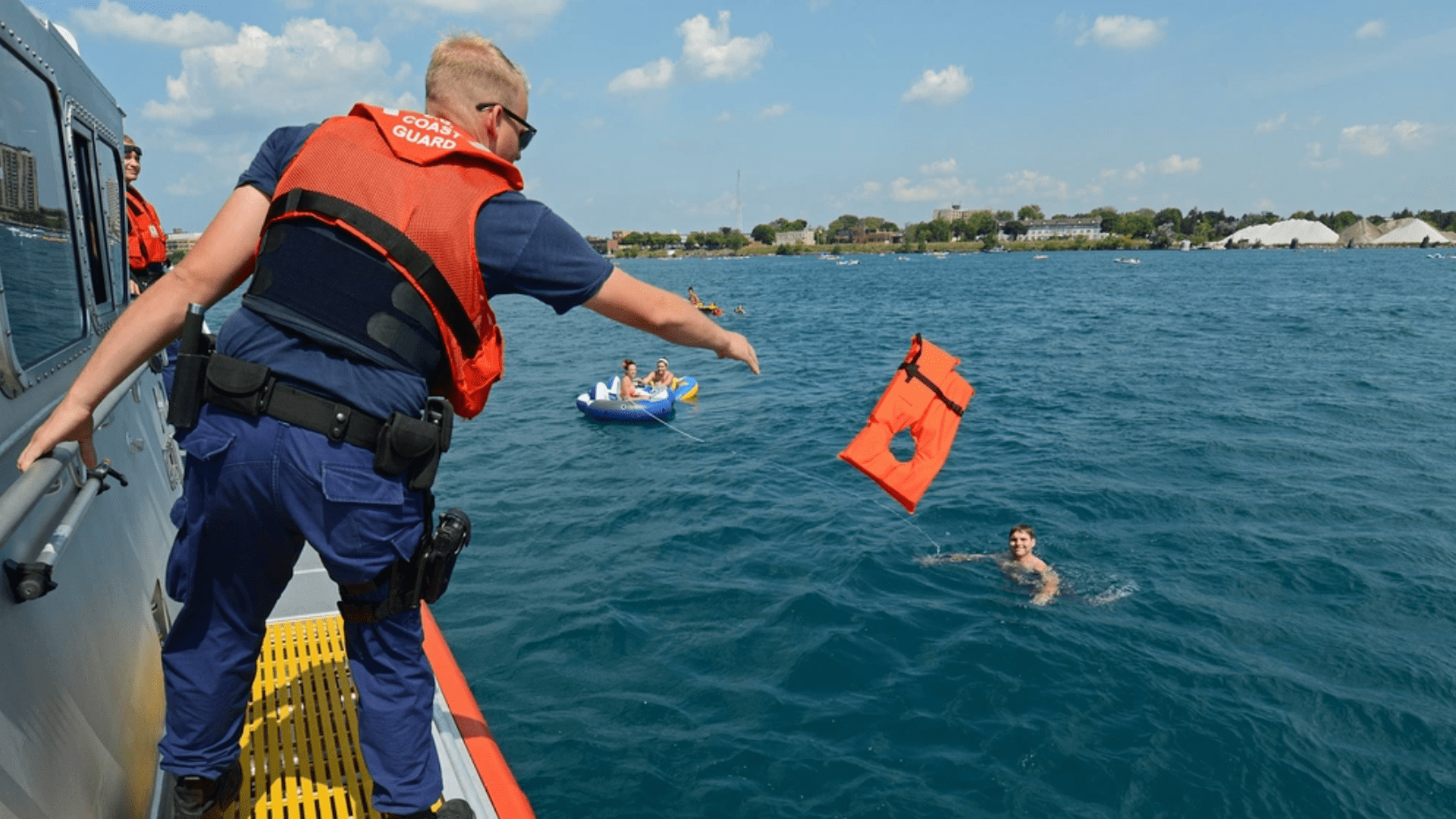

We may earn revenue from the products available on this page and participate in affiliate programs.
Life jackets, or personal flotation devices, used to be bulky, ugly, and fatiguing to wear. Now they’re fashionable, high-performance, and better than ever — and with more people choosing to beat the heat out on the water, they’re also more necessary than ever before.
I spent four years as an active-duty Coast Guard small boat crewman, so suffice it to say, I know a little more than the average bear about what makes for a quality life-saving product and what will turn a potentially deadly accident into just another fun story to tell at parties. With that knowledge and experience in mind, here’s your guide to the best life jackets worth wearing.
- Best Overall: O’Neill Superlite
- Best Budget: Airhead Universal Type II
- Best for Women: Mustang Destiny
- Best for Fishing: Kokatat Leviathan
- Best Inflatable: Mustang HIT
- Best for Kids: NRS Crew Child
- Best for Infants and Toddlers: Mustang Lil’ Legends Infant
- Best for Paddleboarding: Onyx MoveVent Dynamic
- Best for Kayaking: NRS Odyssey
Best Overall
O’Neill Superlite
Pros
- Versatile
- Simple to use
- Four adjustment straps
- Comfortable anatomical cut
Cons
- Best for nearshore activities
- No pockets
- Make sure to use O’Neill’s sizing chart for correct fit
Product Specs
- Sizing: Small – 6XL
- Materials: Nylon, closed-cell foam
- Life jacket type: Type III
Why It Made The Cut
- A versatile all-rounder with lots of adjustments and ergonomic features, the Superlite has all the features of what a Type III life jacket should be in an attractive package at a good price point.
Best Budget
Airhead Universal Type II
Pros
- Type II safety at an incredible price
- As easy to use as it gets
- Compact for easy storage
Cons
- Very basic design
- Less suited for long-term wear
- Not designed for high-speed impacts
Product Specs
- Sizing: Child, Youth, Adult, Adult Oversized
- Materials: Nylon, closed-cell foam
- Life jacket type: Type II
Why It Made The CUt
- Basic yet effective, the Airhead Universal is affordable and great for short outings, and stows easily for a handy backup life jacket.
Best for Women
Mustang Destiny
Pros
- Specifically designed for women, not an afterthought
- Fantastic range of adjustments
- Easy to use
- Versatile and mobile
Cons
- Higher-end price
- Only one color option
Product Specs
- Sizing: Small/Medium, Large/XL
- Materials: 200D Nylon, closed-cell foam
- Life jacket type: Harmonized Level 70 (equivalent to Type III)
Why It Made The Cut
- The Destiny was designed for women from the start, and it’s not just a resized men’s life jacket. Great durability and thoughtful features make for a competent general-purpose women’s life jacket.
Best for Fishing
Kokatat Leviathan
Pros
- Excellent working space and pocket layout
- Durable yet breathable
- Contoured foam feels like a custom vest
- Adjustable everywhere
- Unisex that properly fits women, too
- Dual certification in both U.S. and Canada
Cons
- Professional-grade means professional price
Product Specs
- Sizing: XS/Small, Medium/Large, XL/2XL
- Materials: 210 High Tenacity ripstop nylon, Ariaprene mesh, Gaia® PVC-free foam
- Life jacket type: Type III
Why It Made The Cut
- Kokatat already has a reputation for making top-end equipment, and it brought in professional fishermen for consultation when it designed the Leviathan, making for an intuitive and reliable fishing life jacket.
Best Inflatable
Mustang HIT
Pros
- Legendary durability
- Easy to use and won’t activate prematurely
- Lots of visibility and safety features
- Lays flat when uninflated for fantastic mobility
- Easy to maintain with kit
- Good modularity options
Cons
- Quite pricey
- Only for adults or teens aged 16-plus
- Inflatable PFDs naturally more complex to maintain
- Not suitable for aviators as auto-inflation can’t be disabled on this model
Product Specs
- Sizing: Inflatable, one size fits all adults (belt extensions available)
- Materials: 500D Cordura, neoprene collar
- Life jacket type: Recreational Type II, Commercial Type V (Type II performance when worn)
Why It Made The Cut
- I trusted the Mustang HIT with my life for four years, and it never let me down. With lots of personal experience, this was an easy recommendation.
Best for Kids
NRS Crew Child
Pros
- Great adjustability for proper fit
- Kid-specific ergonomic features
- Adjustable leg strap
- Durable and safe
- Front zipper design very easy to put on
Cons
- No pockets
- Light on features
- Make sure to get the right weight range for best results
Product Specs
- Sizing: Child (33-55 lbs), Youth (55-88 lbs)
- Materials: 200D nylon, closed-cell foam
- Life jacket type: Harmonized Level 70 (equivalent to Type III)
Why It Made The Cut
- The Crew Child has some of the best adjustability for a kid’s life jacket, while keeping a straightforward and comfortable design philosophy.
Best for Infants and Toddlers
Mustang Infant Lil’ Legends
Pros
- Type II safety with extra head support
- Moisture-wicking liner and mesh combat swampy interiors
- Large reflective grab handle
- Adjustable leg strap
Cons
- Zipper can be opened by fidgeting (though not required for flotation)
- No dedicated tether attachment points
Product Specs
- Sizing: Infant (up to 30 pounds), Child (33-55 pounds), Youth (55-88 pounds)
- Material: Fabric, closed-cell foam
- Life jacket type: Type II
Why It Made The Cut
- Even with lessons, infants and toddlers are very weak swimmers and need extra buoyancy in an emergency. The Infant Lil’ Legends provides face-up flotation in one of the most comfortable Type II life jackets around.
Best for Paddleboarding
Onyx MoveVent Dynamic
Pros
- Purpose-built for paddlesports
- Outstanding ventilation e
- Articulated foam panels for great paddling range of motion
- Won’t ride up during long paddles
- Unisex sizing that actually works for everyone
Cons
- Hard to tuck away lower back mesh panel when paddleboarding
- Extra safety buckle near belly would be nice
- Selfie stick not included
Product Specs
- Sizing: XS/Small, Medium/Large, XL/2XL
- Materials: 200D Ripstop nylon, closed-cell foam
- Life jacket type: Type III
Why It Made The Cut
- A paddlesport life jacket’s focused design with amazing ventilation means wearers stay cool and fatigue-free when out of the water and stay afloat in case of a tumble.
Best for Kayaking
NRS Odyssey
Pros
- All-day comfort
- Zippered pockets big enough for compact binoculars
- Lots of attachment points and lash tabs
- Great flexibility
- Stays cool with CFS ventilation
- Adjustable waist strap for extra secure fit
- 400D Ripstop nylon is extra-tough
Cons
- Premium price
- Full back design can be a pro or a con depending on preference
- Open water design focus means not great for whitewater kayakers, consider the NRS Ninja for more adrenaline-fueled kayaking
Product Specs
- Sizing: XS/Small, Medium/Large, XL/2XL
- Material: 400D Ripstop nylon, closed-cell foam
- Life jacket type: Type III
Why It Made The Cut
- Designed as a touring kayak PFD, the Odyssey is built to be comfortable on all-day open-water kayaking trips. Easily accessible storage and 400D Ripstop nylon make this PFD as convenient as it is durable.
Things to consider before buying a life jacket
Purpose
Besides just keeping your head above water, life jackets can have a lot of specialized features. Consider what waterborne activity you’ll be doing the most and see if just a general Type III PFD works or if you might need something more purpose-built. For example, sea kayaking and whitewater kayaking have very different aspects and are best served by different types of PFDs.
Comfort
An uncomfortable life jacket doesn’t get used nearly as much as the one you forget you’re even wearing. And with a lifesaving device, you never know when you’re going to need that PFD. A comfortable PFD will also make for a more enjoyable experience on the water overall, which is the whole point of recreational aquatics in the first place, isn’t it?
Longevity
One of the main drivers of the price will be how often a PFD is designed to be used. If you’re the type to go boating or paddleboarding just a few times every summer, then a budget-friendly choice will be right for you. If you’re a dedicated kayaker or boater who’s out on the water once or twice a week, then springing for a more durable vest is a more prudent choice. Chances are they’ll be more comfortable too.
Type
You’ve probably heard by now references to Type II or Type III PFDs, which are the most common you’ll encounter in the recreational boating world.
A Type II PFD has most of the buoyancy at the front and neck so you float face-up in the water. It’s very useful for sailing, where a swinging boom is very likely to knock you overboard and knock you unconscious.
A Type III PFD has the same minimum buoyancy requirement as Type II, but is more of a jacket or vest design. This means Type III PFDs are more comfortable and flexible. With a Type III, you get more comfort instead of more safety.
Lastly, high-quality inflatable PFDs will often be categorized as Type V and have a second type listed after, which just means they’re a special use device to note they only provide the listed flotation when inflated. Note that I will always recommend a Type II PFD for infants or small children.
FAQ about life jackets
Q: Do life jackets expire?
A: Most life jackets don’t have an expiration date. Over time, the outer shell or straps may get frayed or damaged, so if there are any rips or tears, the life jacket is no longer considered approved. Inflatable life jackets do have an expiration date, however, often printed on the inflation device or gas cylinder (often five years from date of manufacture). Replace or send in the vest for qualified maintenance before this date to ensure the vest will inflate properly when needed.
Q: How many life jackets are required on a boat?
A: There should be at least one life jacket for each person aboard, and they need to be the right size (adult, child, etc) as well as readily accessible. Children under 13 must always be wearing their life jackets unless they’re below deck or in an enclosed cabin. Any vessel over 16 feet in length must also have a throwable Type IV PFD (e.g., life ring).
Q: Can you drown with a life jacket on?
A: It is an unfortunate fact of life that no waterborne activity is absolutely safe, even with a life jacket on. Type II and Type III life jackets (the most common) are designed to keep the wearer floating in nearshore, relatively calm waters where rescue is likely to come soon, but there are many factors that can shorten that time period from cold to heavy surf. That said, 90 percent of drownings happen to boaters without their life jackets on, so life jackets save many lives each year.
Q: How do I know if my life jacket fits correctly?
A: A properly fitting Type III life jacket should be snug, but not so tight that it impedes breathing or normal motion. It should stay in place if you fall overboard even with your arms above your head (a little shifting is okay but not so much it falls off, covers your face, or chokes you). A Type II PFD will naturally be more snug around the neck and typically only has adjustment around the waist. The waist strap should be tight enough to prevent slipping out from under the PFD in the event of a rough water entry.
Final thoughts
Finding a good life jacket is mostly about finding the right fit and lining up your waterborne interests with your budget. The O’Neill Superlite provides one of the most versatile vests with great adjustment options at a very reasonable price. There are cheaper life jackets on the market and definitely some more expensive ones, but the Superlite really hit that sweet spot of price-to-performance ratio. Unless you need something more specialized like all-day kayaking comfort or an inflatable vest, the Superlite from O’Neill will keep you safe and secure while out on the water.
Methodology
As a former Coast Guard small boat crewman and a lifelong aquatics enthusiast, I relied on a great deal of past experience when making my choices for this list. I’ve personally used a variety of PFD types from many different brands, including more specialized devices like float coats and dry suits in about every kind of sea state there is and while performing complex tasks like law enforcement or search and rescue. This is why I harp on proper fit so much throughout my review, because it really does make a difference. Adjustability is the name of the game, so a generous range of adjustments is one of the top things I looked for. Brand reputation is another big one, so I only selected brands I personally trust to have great durability and consistently provide the safety they’re rated for.
For child and infant life jackets, leg or crotch straps were a major factor as it’s very easy for scrawny and squirmy youngsters to slip out of their PFDs without them. A Type II PFD was also a must for infants and toddlers, so that narrowed the field quite a bit in that category. For the best women’s life jacket category, I know a lot of women boaters and aquatic adventurers out there, so it was a simple matter of surveying them for their favorite and least favorite features.
